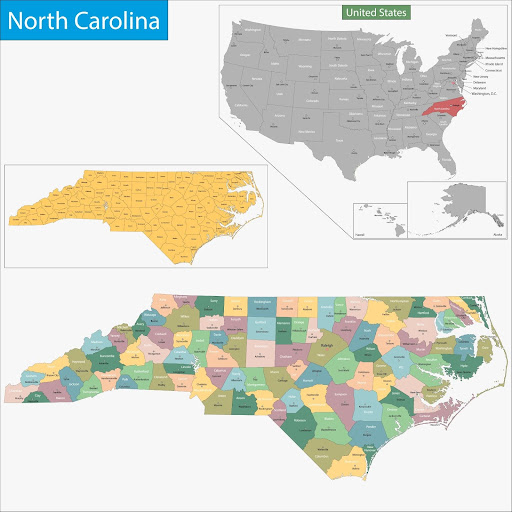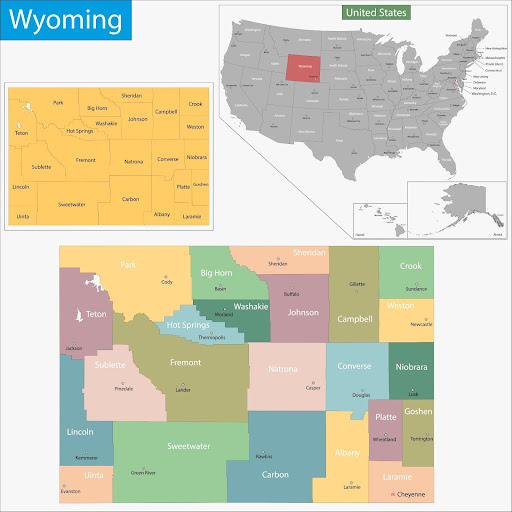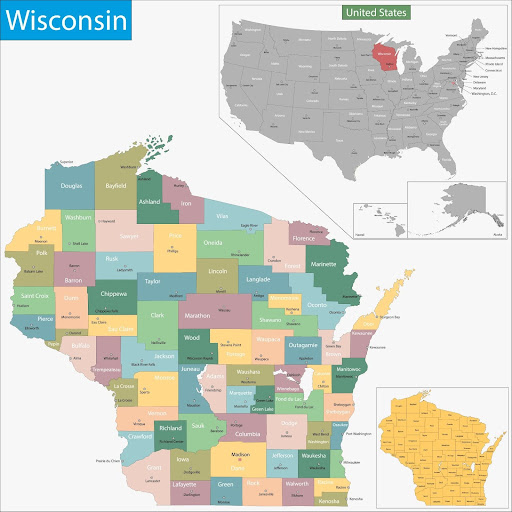Table of Contents
With dense fuel beds, sprawling pine plantations, hurricane blowdowns, and one of the highest population growth rates in the country, North Carolina’s fire scene is changing fast, and so is the job of the fire investigator.
One day, you might be flagging an ignition point deep in coastal pocosin. Next, you’re working a WUI ignition along a golf course in Asheville. Add prescribed burn culture, overlapping jurisdictions, and steep terrain in the west, and fire cause determination becomes a tightrope walk between precision, policy, and timing.
This guide on wildland fire resources in North Carolina is your anchor, built for boots-on-the-ground fire investigators working across the Tar Heel State. It covers live incident tracking, agency structures, seasonal behavior, and training hubs to keep you sharp in every region.
Get a broader view in our wildland fire resources hub.
Live Incident Updates & Maps
Stay on top of active wildfires across North Carolina with this live resource:
State Overview
North Carolina’s fire ecology is a patchwork of ecosystems, and fire behavior changes fast as you move from east to west.
- Coastal Plain: Home to flammable pocosins, pine flatwoods, and peat soils that can smolder for weeks underground. Suppression is difficult, and reignition is common.
- Sandhills: Frequent-fire ecosystems with longleaf pine and wiregrass. These areas rely on prescribed fire but can flare up fast when RH dips.
- Piedmont: Rolling hills, loblolly plantations, and increasing urban sprawl. Debris burns and equipment-caused fires dominate.
- Blue Ridge & Smokies: Complex terrain, low visibility, and delayed response access. Fires can creep for days in duff-heavy hardwood forests.
- WUI Zones: Rapid development around Charlotte, Raleigh, and mountain towns has expanded WUI threats, often with low public awareness and poor defensible space.
Wildfire Season Timeline
North Carolina’s wildfire season is less about one peak and more about two distinct waves:
- Late Winter–Spring (February–May): The most active period. Leaf litter is dry, winds are high, and prescribed burns occasionally escape. Investigators often encounter debris-burn-related ignitions.
- Fall (October–November): A second spike. Cold fronts and dry air after the tropical season lead to rapid fuel curing. Lightning is rare, but human-caused fires rise.
- Summer (June–August): Minimal activity in most regions due to high humidity. However, occasional lightning or equipment fires still occur.
- Year-Round Risk: In the Coastal Plain, drought or low RH can trigger fires almost any time of year, especially in managed pine plantations.
Key State Agencies Involved
North Carolina Forest Service (NCFS): The lead agency for wildland fire suppression and investigation on state and private lands. Investigators may work closely with County Rangers, Fire Environment Foresters, and regional Fire Management Officers (FMOs).
NC Department of Public Safety – Emergency Management Division: Coordinates large-scale incident response, IMTs, and resource sharing across agencies. They often support logistics and public safety efforts during extended incidents.
North Carolina State Fire Marshal’s Office (OSFM): Supports structural fire investigations, training, and certification. Investigators may partner with OSFM in WUI or mixed-use ignition scenes.
Tribal Fire Authorities: Tribes such as the Eastern Band of Cherokee Indians manage their own fire programs. Cross-jurisdictional cooperation is essential for fires on or near tribal land.
U.S. Forest Service (USFS) & National Park Service (NPS): Federal agencies oversee millions of acres in the Appalachian region. Expect NWCG protocols, Law Enforcement & Investigations (LEI) involvement, and joint determination when fires impact federal lands.
Local Wildland Firefighting Resources
Much of North Carolina’s initial attack happens fast and locally. County-based NCFS staff, volunteer departments, and Type 6 strike teams form the front lines. For investigators, local intel from VFDs and County Rangers is often the first clue to origin and cause.
List of Local/State/Federal Fire Response Agencies
North Carolina Forest Service Districts: Each NCFS district includes suppression crews, heavy equipment, and fire investigators. Many counties also have dedicated Fire Environment personnel with investigative expertise.
Volunteer Fire Departments (VFDs): VFDs operate across North Carolina. These agencies are often first on the scene, particularly in rural areas. Investigators should coordinate with VFD incident commanders for details on the early timeline.
County Emergency Management Offices: Key players for incident coordination, evacuation planning, and local response logistics. Many also manage local burn permit systems.
USFS & NPS Fire Units: Western NC includes the Pisgah, Nantahala, and Uwharrie National Forests, plus the Great Smoky Mountains National Park. Investigators working near federal land should coordinate early to avoid jurisdictional confusion.
Contact Numbers and Emergency Links
- To Report a Wildfire: Dial 911
- NCFS County Contacts: https://www.ncforestservice.gov/contacts
- NCFS Dispatch/Fire Control: 919-857-4801
- Southern Area Coordination Center (SACC): 404-829-3300 | https://gacc.nifc.gov/sacc
- NC Burn Ban and Alert Map: https://www.ncforestservice.gov/burn_ban
Training & Volunteering
North Carolina’s fire training programs emphasize NWCG compliance, WUI response, and seasonal preparedness. Investigators can access both state-sponsored courses and federal training via cooperative agreements.
NWCG-Approved Academies and Centers
North Carolina Fire and Rescue Training: Held annually at Montgomery Community College. Offers full NWCG tracks including S-130/190, L-280, and FI-210. Often includes breakout sessions for fire cause analysis and scene preservation.
NCFS Training Division: Coordinates mobile training units and district-level classes throughout the year. Investigators can join FI-310 and post-fire analysis sessions hosted in conjunction with county fire marshals.
USFS and NPS Training Programs: USFS Region 8 fire units (based in Asheville and Franklin) offer seasonal fireline training, investigative shadowing opportunities, and refresher courses.
Volunteer and Seasonal Training Opportunities
North Carolina Fire Crew Program: Managed by NCFS, this seasonal program trains emergency firefighters for wildfire deployment. EFFs often assist with mop-up and origin scene protection.
VFD Wildland Certification Track: Many rural departments pursue NWCG-aligned wildland certs with state assistance. Investigators may collaborate with these departments on first-entry timelines and local burn knowledge.
Community College Fire Programs: Many NC community colleges offer fire behavior and investigation coursework through public safety training academies. These are often open to volunteers and career staff alike.
Stay Informed on North Carolina’s Wildland Fire Landscape
The Tar Heel State’s fire picture is evolving. Population growth in forested areas, hotter springs, and expanded prescribed burning are all shifting ignition patterns, and fire investigators have to keep up.
Don’t assume the same ignition sources year to year. Maintain district-level situational awareness, stay current on burn restrictions and red flag warnings, and lean on interagency partners. Fire in North Carolina may not roar like it does out west, but it burns smarter, sneakier, and often when no one’s watching.
FAQs
How do I report a wildfire in North Carolina?
Call 911 immediately. For non-emergency fire reports or fire info, contact your county’s NCFS office.
Who investigates wildfires in North Carolina?
The North Carolina Forest Service leads investigations on state and private lands. In WUI or structural cases, the OSFM or local fire marshals may be involved. Federal lands fall under USFS or NPS jurisdiction.
Can I conduct a controlled burn in North Carolina?
Yes, with a permit. Burn permits are required for most outdoor burns and can be obtained online or through NCFS field offices. Burn bans may override permits during high fire danger.










